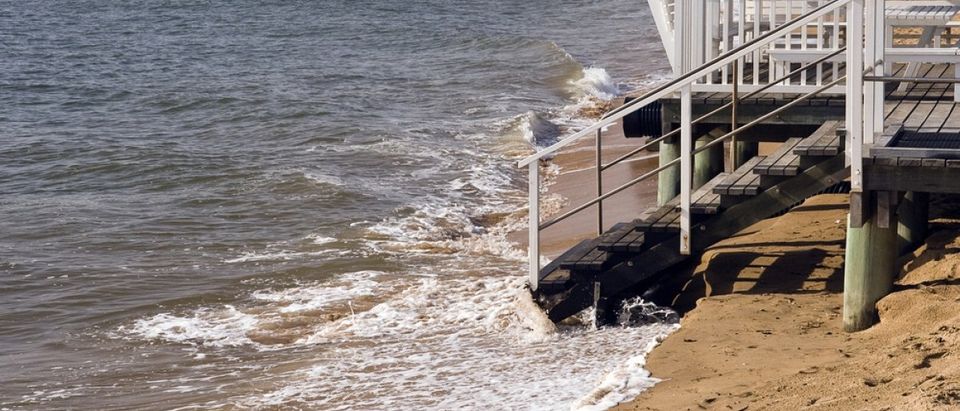A prominent liberal news outlets was forced to walk back an article that “exaggerated” the link between man-made global warming and Pacific islands getting swallowed up by sea level rise.
The UK Guardian was one of many media outlets jumping to the conclusion that a study published Friday showed how Pacific islands were being submerged by global warming-driven sea level rise. The study’s author disagreed.
“All these headlines are certainly pushing things a bit towards the ‘climate change has made islands vanish’ angle,” Dr. Simon Albert, the study’s author, told the Guardian in a subsequent article correcting the paper’s alarmism.
“I would prefer slightly more moderate titles that focus on sea-level rise being the driver rather than simply ‘climate change’,” Albert said.
Albert’s study “identified five vegetated reef islands that have vanished over this time period and a further six islands experiencing severe shoreline recession.” The study attributed the sea level rise to trade winds forcing more water into the region. Natural ocean cycles, particularly the Pacific Decadal Oscillation, are causing islands to sink regardless of man-made warming.
“These trade winds have basically pushed water up into western Pacific and have driven these exceptionally high rates of [sea-level rise] in the Solomons,” Albert said. “The trade winds are partly a natural cycle but also the recent intensification is related to atmospheric warming.”
Coastal erosion from high wave energy has also been a major problem for these reef islands, which has made adapting to rising sea levels harder for some low-lying Solomon Islands.
“The key aspect I stand by is that these observations from the Solomons are a warning of things to come irrespective of if climate change alone caused it or a range of factors,” he said.
Albert’s message to the media, however, didn’t get out in time. Several news outlets ran with headlines suggesting global warming was the main culprit behind sinking islands. A Solomon Islands official even used the study to call for more aid from the United Nations.
“This ultimately calls for support from development partners and international financial mechanisms such as the Green Climate Fund,” Melchior Mataki, who heads the Solomon Islands’ National Disaster Council, said in a commentary published on the study.
Scientists and environmentalists have warned for years that global warming will exacerbate sea level rise and storms, causing Pacific island communities to be wiped out. But the real story seems to be more complicated.
The islands identified by Albert were low-lying reef islands that tended not to have year-round communities living on them. The tropical Pacific region also has lots of variability in terms of sea level rise due to natural ocean cycles and El Ninos.
In fact, research has also found some reef islands are growing in size despite rising sea levels. Ironically, the same high energy waves that erode the coasts of some islands actually bring more sediment and coral debris to others, causing them to grow. Humans have also contributed to growth by artificially expanding islands.
Scientists from Australia and New Zealand found in 2015 that despite the Funafuti Atoll seeing “some of the highest rates of sea-level rise… over the past 60 [years]” the island chain has actually enlarged.
“Despite the magnitude of this rise, no islands have been lost, the majority have enlarged, and there has been a 7.3% increase in net island area over the past century (A.D. 1897–2013),” according to the study published in the journal Geology. “There is no evidence of heightened erosion over the past half-century as sea-level rise accelerated.”
Albert’s study acknowledges another 2015 study finding “little evidence of heightened erosion or reduction in island size” in Pacific islands.
“These islands were located across the Central Pacific in areas with 1–5 mm yr−1 sea-level rise where net accretion occurred on most islands and only small (<1 ha) islands were actively eroding,” Albert wrote in his study.
Follow Michael on Facebook and Twitter
All content created by the Daily Caller News Foundation, an independent and nonpartisan newswire service, is available without charge to any legitimate news publisher that can provide a large audience. All republished articles must include our logo, our reporter’s byline and their DCNF affiliation. For any questions about our guidelines or partnering with us, please contact licensing@dailycallernewsfoundation.org.


